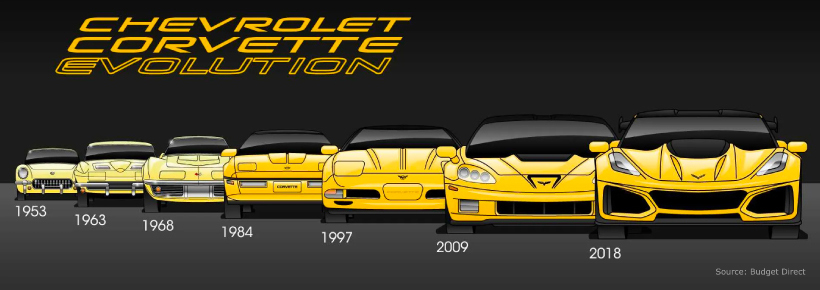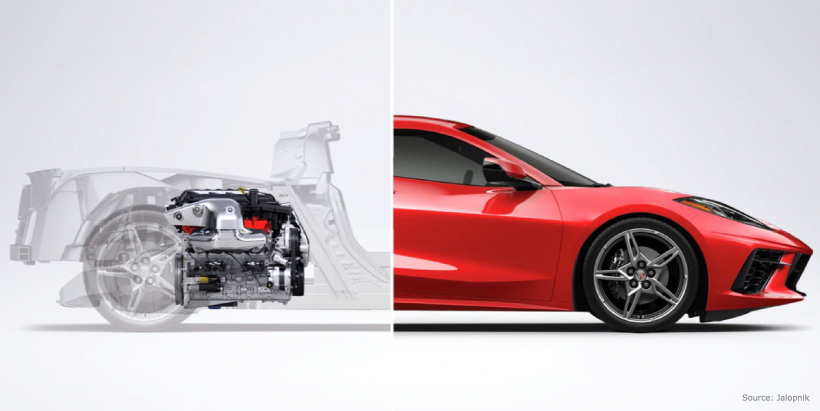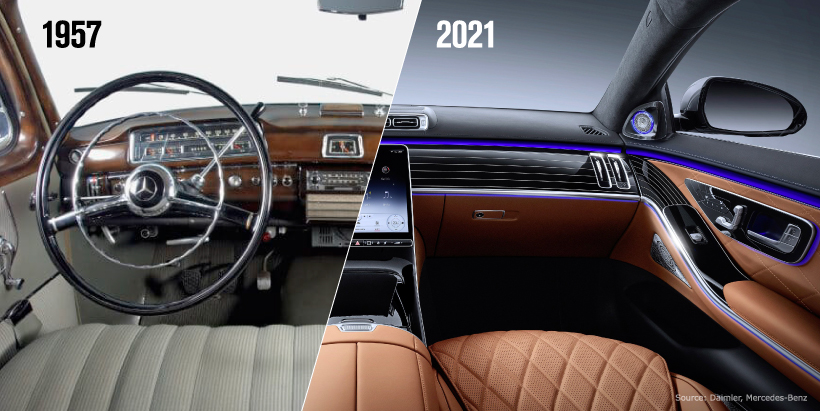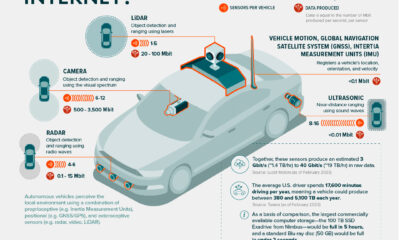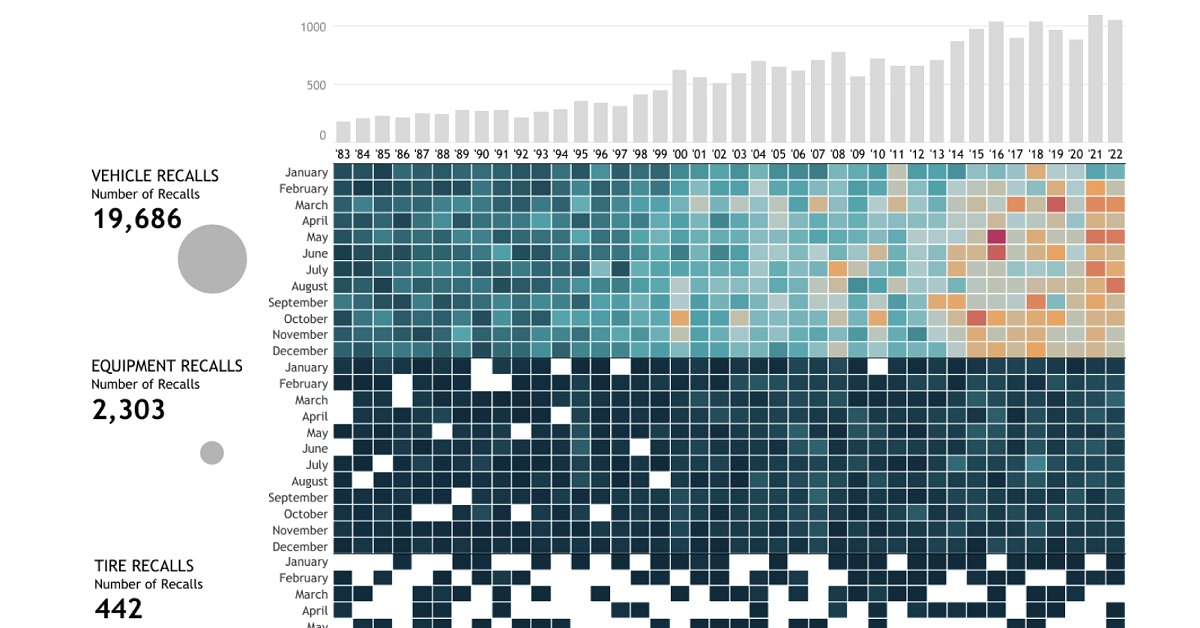Whether they’re designed for excitement, luxury, or just simple transportation, these vehicles offer a set of features that make them highly desirable to consumers. The most successful models will undergo numerous revisions over time, sometimes sticking around for many decades. To learn more, this graphic from Alan’s Factory Outlet lists the 35 vehicles with the longest production runs of all time. Here are the top 10 below. As we can see, successful models come in many shapes and sizes, and from a variety of manufacturers. Below, we’ll take a deeper dive to learn more about what makes these cars special.
Ford F-Series
Ford began selling its first pickup truck in 1925, which was essentially a Model T with a flatbed in the rear. This layout was very useful because it enabled people to transport cargo, raw materials, and other items with relative ease. Then, in 1948, Ford introduced the F-series pickup. The truck became one of Ford’s most well-known and profitable models, and is currently in its 14th generation.
While the fundamental shape of the F-series hasn’t changed, Ford’s best-selling model owes much of its success to its constant innovation and technological improvements. In 2015, the F-150 became the first fullsize pickup to feature an all-aluminum body. This reduced the truck’s weight by as much as 500 pounds, resulting in better fuel economy and driving dynamics. Ford is also credited with bringing turbocharged engines into the mainstream (within the pickup segment). This first-mover advantage gave the F-Series a competitive edge in terms of fuel efficiency and torque.
Chevrolet Corvette
First introduced in 1953, the Chevrolet Corvette is regarded as America’s most iconic sports car. It has a reputation for offering similar performance as its more expensive foreign rivals, and combines unique styling elements with a successful motorsport background. For most of its history, the Corvette was a rear-wheel drive coupe with a V-8 engine placed in the front. It also featured pop-up headlights for several generations, but the design was eventually phased out due to stricter regulations.
Chevrolet drastically changed the formula of the Corvette for its eighth generation, which launched in 2020. The engine is no longer in the front of the car, but instead, placed directly behind the occupants.
This mid-engine layout results in a Corvette with significantly different proportions than its predecessors. Because a bulk of the car’s weight is now located more centrally, the C8 should (in theory) offer better traction and balance. Few cars have undergone such large changes to their fundamental design philosophy, but the move appears to have worked—production is far from meeting demand.
Mercedes-Benz S-Class
The S-Class from Mercedes is widely recognized as the global benchmark for full-size luxury sedans. Since its introduction in the 1950s, the S-Class has continuously introduced new innovations that improve comfort and safety.
The 1959 S-Class (dubbed W111) was the first production car with crumple zones front and rear. Crumple zones are structural elements that absorb the impact of a collision. The 1978 S-Class (W116) introduced electronic anti-lock brakes (ABS). This system prevents tires from locking up under sudden braking and is included on every modern car. The 1991 S-Class (W140) was the first car to feature double-glazed windows, which improves insulation while reducing road noise. The 2021 S-Class (W223) introduced the world’s first rear-seat airbag.
One of the most important aspects of a luxury car is its interior, and the S-class has come a long way since its first iteration.
The interior of the latest S-Class features active ambient lighting that can visually reinforce any warnings generated by the car’s driving assistance systems. The cabin also features MBUX Interior Assist, which can read motion commands (such as hand movements) by the driver. The car’s center console is dominated by a single large screen—a trend that was first introduced by the Tesla Model S.
Big Changes in Store
Global governments have announced a ban on the sale of new gasoline cars by as early as 2030. This foreshadows a great shift towards battery power and gives automakers the opportunity to reimagine their most iconic models. For example, the Ford Mustang Mach-E is an all-electric SUV that borrows both the name and styling of the brand’s famous pony car. The company also recently launched an electric version of the F-150, called the F-150 Lightning. German brands are taking a different approach by creating a completely new range for their EV models. This includes the Audi e-tron, BMW i, and Mercedes EQ lineups. This implies that their existing gasoline-powered models could be coming to an end. on These faulty airbags, installed by 19 different automakers including BMW and Toyota from 2002 to 2015, can explode when deployed and have led to numerous tragic accidents. Their recall affected 67 million airbags (including Honda’s vehicles above) and has been known as the largest safety recall in U.S. history. Over the past four decades, there have been over 22,000 automobile recalls in the United States. In this interactive piece, Chimdi Nwosu uses data from the National Highway Traffic Safety Administration to visualize the types of automobile recalls over the past 40 years, the companies with the most recalls, the components that were recalled the most, and, most importantly, their impacts on people.
Breaking Down U.S. Automobile Recalls
Whether a recall affects specific vehicle components, equipment, or vehicles as a whole, it affects the lives of millions of automobile users. When combined, these numbers ramp up exponentially. The U.S. alone has seen a total of 22,651 recalls over the past 40 years, impacting more than one billion people. Almost 72% of these people were affected by nearly 20,000 vehicle recalls, while around 19% were impacted by over 2,000 equipment recalls during this period. Comparatively, the 442 tire recalls and 220 child seat recalls affected significantly less, but still a total of 96.9 million people. While an inconvenience to many, the recall of these faulty vehicle parts saves many more from unfortunate incidents that may have occurred if left unchecked.
Minor and Major Recalls
One of the largest recalls in history took place in 2014 when General Motors—the manufacturer with the highest total of recalls in four decades—recalled millions of vehicles including the 2005-2007 Chevrolet Cobalt, 2007 Pontiac G5, and 2006-2007 Chevrolet HHR, amongst others. The reason for this recall was a faulty ignition switch that caused the vehicle’s engine to shut down while driving, disabling safety systems including airbags. This fault led to the death of hundreds of people. However, not all recalls are this severe. BMW, for example, recalled just four vehicles in December last year because one of the four bolts in the driver’s backrest was not attached properly. Similarly in 2020, Ford recalled some of its vehicles due to a faulty door latch. While this recall inconvenienced over two million users, it was less likely to lead to severe consequences if left unchecked.
A Safer Future?
The number of automobile recalls over the past four decades has seen a steep rise. As have car safety standards. While recalls could hint at the risks involved in taking your car out for a drive, they also indicate manufacturers taking responsibility for their faulty commodities, and affect a very small percentage of vehicles on the road. To improve automobile safety, the NHTSA proposed a New Car Assessment Program in 2022, which provides vehicle users with safety ratings for every new vehicle. This five-star safety rating program rates the vehicles’ safety features, crashworthiness, and resistance to rollover. With self-driving cars now also entering the mix, we need to stay informed about vehicle safety to keep our vehicles, our streets, and ourselves safe in the future.
